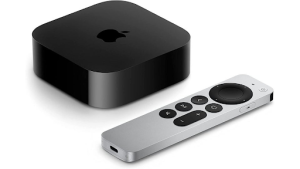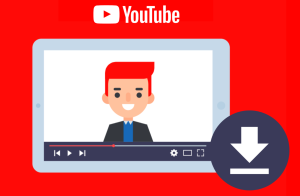
PowerPoint is one of the most popular tools used for creating visual aids and slide presentations. With PowerPoint, users can easily create professional-looking slideshows that effectively communicate ideas to an audience.
One of the key features of PowerPoint is the ability to add multimedia elements to presentations. Users can insert images, videos, graphs, and charts into their slides. This enhances the visual appeal of the presentation and makes it more engaging for viewers.
Another important aspect of PowerPoint is its ease of use. The software has a user-friendly interface that allows even novice users to create compelling presentations quickly and easily. Additionally, PowerPoint offers numerous templates and pre-designed themes that make it easy to create visually appealing slideshows without extensive design expertise or experience. Here we will discuss What is a PowerPoint Presentation and how we make it perfect.
Designing a Presentation
A PowerPoint presentation is a visual tool used to communicate information effectively. It is a software program designed by Microsoft that allows users to create presentations consisting of slides, which can contain text, images, charts, and multimedia elements such as videos or audio clips. PowerPoint presentations are widely used in businesses, schools, and other organizations for training purposes, sales pitches, project proposals, or academic lectures.
When designing a presentation in PowerPoint there are several factors to consider. First of all, it’s important to have a clear understanding of the audience you will be presenting to and tailor your message accordingly. Secondly, choose an appropriate color scheme that reflects your brand or topic and use consistent fonts throughout the presentation. Thirdly, organize the content logically and break it down into manageable sections with clear headings on each slide. Finally, make sure you use visuals such as charts or images to illustrate key points where necessary while avoiding overwhelming the audience with too much information on one slide. By following these tips you can create an effective presentation that engages your audience from start to finish.
Types of Slides
PowerPoint presentation is a widely used tool in the corporate world to create slideshows for presentations, meetings, and seminars. It helps users to add text, images, graphics, and multimedia elements in a visually appealing manner. There are several types of slides that one can choose from while creating a PowerPoint presentation.
The first type of slide is the title slide which includes the presentation topic, presenter name, and date. This slide mainly sets the tone for the best presentation of your presentation. The next slide type is a content slide that contains information about your topic including bullet points, charts, or graphs. This type of slide makes up most of your presentation.
Another important type of slide is image-based slides which include pictures or videos to support your message or story. These slides help break up long stretches of text and add visual interest to your presentation. Lastly, there are transition slides which are used to move smoothly between different sections or ideas within your presentation.
All these types of slides play an important role in delivering an effective PowerPoint Presentation as they keep the audience engaged and help convey complex ideas in a simplified manner with visual aids.
Working with Media
A PowerPoint presentation is a software application developed by Microsoft that allows users to create visual aids for presentations. It consists of slides that can be filled with text, images, videos, charts, and graphs. The software provides a range of functions and tools to enhance the design and delivery of presentations.
When working with media in PowerPoint presentations, it’s essential to consider the audience and message you want to convey. Incorporating relevant images or videos can help engage your audience and communicate your point effectively. However, it’s also important not to overload your presentation with too much media as it may distract from the content.
In addition, using high-quality visuals that are consistent in style enhances the overall look of your presentation. This could mean using graphics from a similar source or creating custom designs that match your branding guidelines. Ultimately, working with media in PowerPoint requires careful consideration and planning to produce an effective and cohesive visual aid for any given topic or message.
Animations & Transitions
PowerPoint presentation is a popular tool used by professionals and students alike to create engaging and informative visual aids. Animations and transitions play a crucial role in elevating the quality of these presentations. Animations are special effects that can be added to the text, images, or other objects within a slide. They help to emphasize key points and keep the audience engaged. Transitions, on the other hand, refer to how one slide moves to another.
Animations work best when they are used sparingly and purposefully. Too many animations can be distracting and take away from the message being conveyed. It’s important to choose animations that complement the content rather than overpowering it. Similarly, transitions should be chosen carefully based on their relevance to the topic at hand.
When used effectively, animations and transitions can make PowerPoint presentations more dynamic and memorable for audiences. They help presenters convey complex information in an easier-to-understand manner while making it more visually appealing as well. With practice, anyone can learn how to use these features of PowerPoint effectively in their presentations, taking them from average to outstanding with just a few clicks!
Conclusion: Benefits of PowerPoint
PowerPoint Presentation is a powerful tool that allows presenters to convey their ideas in an engaging and impactful way. It provides users with the ability to create stunning visual aids, such as slideshows, charts, graphs, and multimedia for use in business presentations, educational lectures, or even personal projects. However, beyond its obvious visual benefits, PowerPoint has other advantages that make it an essential tool for anyone who wants to deliver effective presentations.
One of the benefits of using PowerPoint is its versatility. Regardless of whether you are presenting complex data or a simple idea, this tool allows you to customize your presentation according to your audience’s needs. You can control the content flow by selecting among various slide designs or templates and choosing different color schemes suited for specific occasions.
Another benefit of using PowerPoint is its ease of use. With this software application’s intuitive interface and user-friendly features like drag-and-drop functionality to add text or images; transitions between slides; animations; sound effects – creating professional-looking presentations has never been easier. Even novice users can master it quickly without needing advanced technical skills. In conclusion, the benefits of using PowerPoint are numerous and undeniable – from its versatility and ease-of-use features to its impressive array of visual aids capabilities. By utilizing all these resources effectively during presentations, one can easily capture their audience’s attention and communicate complex ideas in an engaging manner that ensures understanding and retention long after the presentation is over. This article is written by Techshill, if you want to convey your voice to our visitors, visit our Write for Us page.







